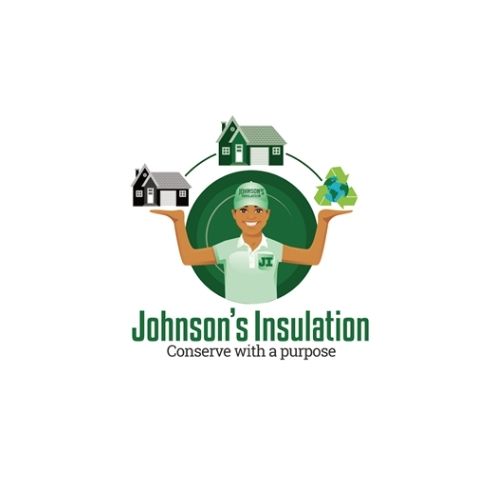
Johnsonsinsulation
Uploaded on Mar 13, 2025
Sustainable commercial building insulation is transforming California’s energy landscape. With strict regulations like Title 24 and CALGreen, businesses must adopt eco-friendly insulation solutions to improve energy efficiency and reduce costs. Modern materials like cellulose, wool, and spray foam offer excellent thermal performance while minimizing environmental impact. Smart insulation technologies further enhance energy savings. Upgrading insulation ensures compliance, lower utility bills, and long-term sustainability, making it a crucial investment for commercial properties. For more information, visit https://johnsonsinsulation.green/commercial/
The Future of Commercial Building Insulation | Sustainable Practices in California
THE FUTURE OF COMMERCIAL
BUILDING INSULATION
SUSTAINABLE PRACTICES IN CALIFORNIA
As California continues to lead the way in
sustainability, commercial building insulation is
evolving to meet energy efficiency and
environmental goals. Insulation plays a critical
role in reducing energy consumption, lowering
costs, and minimizing carbon footprints. With
advancements in materials and technologies,
businesses now have a variety of eco-friendly
options to insulate their buildings. This
presentation explores the latest sustainable
insulation practices shaping the future of
commercial properties in California.
Understanding Commercial
Building Insulation
Insulation is a key component of any commercial building, ensuring energy efficiency, temperature regulation,
and reduced HVAC costs. Traditional insulation materials, such as fiberglass and spray foam, have been widely
used, but new alternatives are emerging to meet modern sustainability standards. Factors like R-value (thermal
resistance), moisture control, and fire safety are essential when selecting the right insulation. Understanding
these elements helps businesses optimize their energy use while maintaining comfort and durability.
California’s Climate &
Energy Regulations
California’s strict building codes, such as
Title 24 and CALGreen, mandate high energy
efficiency standards for new and existing
buildings. These regulations push for better
insulation to reduce greenhouse gas emissions
and support the state’s ambitious climate goals.
Businesses must comply with these evolving
policies by adopting insulation solutions that
minimize heat loss and improve building
performance. By staying ahead of these
regulations, companies can benefit from
incentives and contribute to a greener future.
Sustainable
Insulation Materials
Modern insulation materials are designed
to be both effective and environmentally
friendly. Options such as cellulose (made
from recycled paper), sheep’s wool, and
hemp insulation provide excellent thermal
performance while being biodegradable.
Spray foam insulation has also evolved
with eco-friendly formulations that reduce
chemical emissions. By choosing
sustainable materials, commercial
buildings can improve energy efficiency
while reducing their environmental impact.
Energy Efficiency & Cost Savings
Proper insulation significantly lowers heating and cooling costs by reducing heat transfer. In California’s
varying climate, well-insulated buildings maintain stable indoor temperatures, reducing reliance on HVAC
systems. Studies show that energy-efficient insulation can cut utility bills by up to 30%, providing long-term
financial benefits for businesses. Additionally, improved insulation leads to fewer maintenance issues, making
it a cost-effective investment over time.
Smart Insulation Technologies
Advancements in technology have introduced smart insulation solutions
that enhance efficiency. AI-driven thermal imaging allows for precise
insulation assessments, identifying weak spots that need improvement.
Adaptive insulation materials adjust to climate changes, optimizing energy
performance throughout the year. These innovations are shaping the
future of commercial insulation, making buildings more intelligent and
responsive to environmental conditions.
Challenges & Solutions in
Implementing Sustainable Insulation
Despite the benefits, transitioning to sustainable insulation comes with challenges. The upfront costs of eco-friendly
materials and installation can be higher than traditional options. However, businesses can offset these costs through
government incentives and long-term energy savings. Retrofitting older buildings also presents obstacles, but innovative
solutions such as spray-on insulation and modular insulation panels make the process easier and more effective.
Future Trends in
Commercial Insulation
As the demand for net-zero energy
buildings rises, insulation technologies will
continue to evolve. Innovations in bio-
based materials, such as mushroom-based
insulation, offer promising alternatives to
synthetic options. Additionally, government
programs are expected to expand
incentives for green building upgrades. The
future of commercial insulation in California
will be driven by efficiency, sustainability,
and cutting-edge advancements in
materials and technology.
Investing in sustainable insulation is smart for businesses looking to reduce costs, comply with regulations, and
contribute to environmental sustainability. Commercial buildings can achieve greater energy efficiency and long-
term savings by adopting modern insulation materials and technologies. Now is the time for businesses to
evaluate their insulation strategies and make informed choices that align with California’s green building
standards.
Our Contact
(510) 660-0455
johnsonsinsulation.green
[email protected]
n
1721 Broadway, Ste. 201
Oakland, CA 94612

Comments